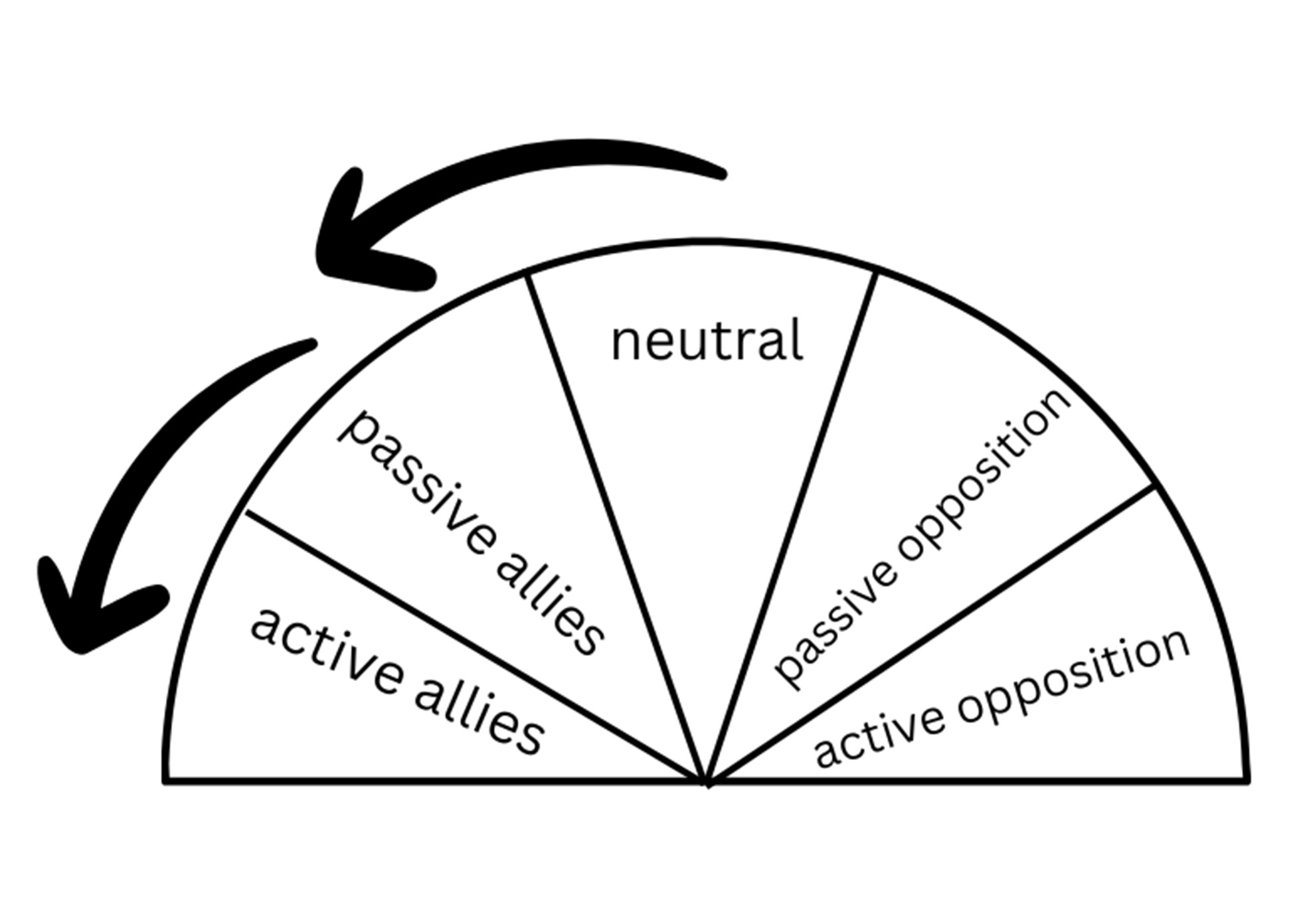Campaigning: your sphere of influence
An overview of identifying and engaging with stakeholders, including a look at the Connectivity Now campaign from network member People Know How.
How to identify campaign supporters
Any campaign needs supporters and allies. When planning your campaign, it is useful to have a look at those who may have a position on your campaign goal.
Two important parts of your campaign are:
- Stakeholders - people who are invested in your campaign doing well.
- Impacted communities - people who are affected by the issue(s) you are campaigning on.
By identifying and mapping out your stakeholders and impacted communities, you can be more specific and prepared to persuade these groups to support your campaign. You can also evaluate the effectiveness of focusing on each group.
It can also be helpful to work out who your opposition is. However, focusing too much on persuading your opponents can weaken your campaign.
The Spectrum of Allies
Using a tool such as the ‘Spectrum of Allies’ can help you work out where to focus your attention.
Draw a half circle and divide it into five wedges. Label each wedge, from left to right:
- Active allies
- Passive allies
- Neutral
- Passive opposition
- Active opposition
Next, place different individuals or organisations in each wedge:
- Active allies - agree with you and what you are doing.
- Passive allies - agree with you but aren’t doing anything about it.
- Neutrals - are unengaged, uninformed or aren’t sure.
- Passive opposition - those who disagree but aren’t trying to stop you.
- Active opposition - those who disagree with you and have done something to prevent you achieving your goal.
Try to be as specific as you can when identifying the different groups. This will make it easier to decide how you will persuade them to action. Effective campaigns aim to shift each group one section around the spectrum to the left. For example, turning passive allies into active allies. This increases the groups supporting your cause and weakens the opposition.
Engaging your campaign allies
Consider the different levels of engagement each group may require. Be specific about what you are asking from them. For example, is it:
- Financial support?
- Raising awareness or getting the word out?
- Attending an event?
- Lobbying for policy change?
Have a variety of entry points of engagement that caters to each group. Some examples of groups you might want to include are:
- Political parties, elected officials, such as MPs, local councillors, government ministers
- Companies and local businesses
- Universities, colleges and schools
- Voluntary, community and charitable organisations (local, national or even international)
- Religious groups and community leaders
- Trade unions
Digital inclusion campaigning in action
People Know How, a member of the National Digital Inclusion Network, launched their Connectivity Now campaign to combat data poverty across Scotland.
The campaign was broken down into three ways of addressing the problem:
- Viewing connectivity as a basic utility
- Regulating the telecoms market to simplify internet package tariffs
- Increasing accessibility of packages aimed at low income households
People Know How then connected with other groups, including The University of Edinburgh, Good Things Foundation, Spartan Community Football Academy and Polwarth Parish Church. They asked them to share their experiences and thoughts on digital exclusion and data poverty.
The groups were encouraged to record a short video, explaining why they support the campaign. The groups were promoted on the People Know How website.
Claudia, from People Know How, said the following about their campaign:
"The biggest learning point for us in this campaign was that, while we did and are achieving a lot with it, it hasn’t happened in the way we originally imagined. We thought we would gain the most momentum by gaining lots of pledgers, but in reality the biggest impact of the campaign was having it as a platform to connect with others and foster research, collaborations and partnerships.
"It has led to some brilliant pieces of research, some of which were led by us, some which were collaborations, and others in which we were one participant of many. It also led to us being part of the Data Poverty APPG, and to some new exciting projects that are coming up very soon."